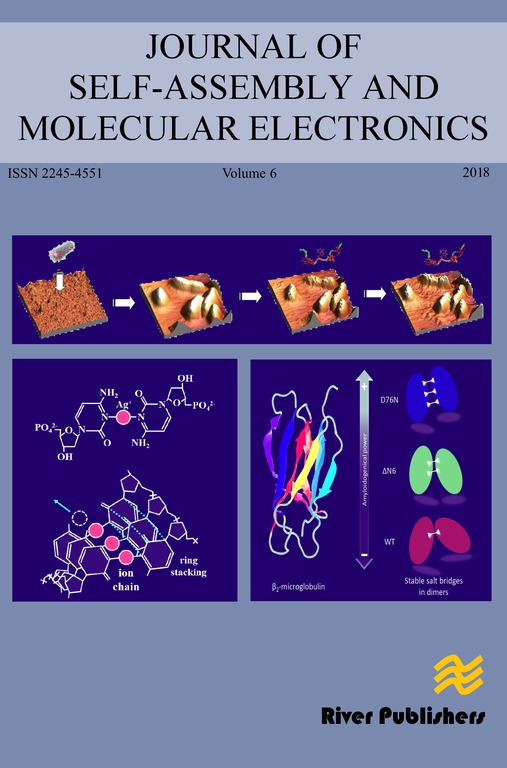Electrospinning with Droplet Generators: A Method for Continuous Electrospinning of Emulsion Fibers
DOI:
https://doi.org/10.13052/jsame2245-8824.2022.001Keywords:
Emulsion electrospinning, droplet generator, rapid prototyping, 3D printed microfluidics, PVA, gelatine, grapeseed oilAbstract
Emulsion electrospinning is a promising method for creating fibrous vehicles for delivery of drugs and bioactive compounds for the medical and food industries. Droplet microfluidics is a potent way of continuously generating controllable emulsion droplets. The incorporation of a droplet generator in an electrospinning setup for continuous electrospinning of emulsion fibers has been investigated. The influence of a droplet generator on the morphology of emulsion fibers has been established through electrospinning of emulsions of grapeseed oil in PVA and gelatine. The droplet generator was found to have no influence on the morphology of fibers. Conventional emulsification methods and droplet generator emulsification has been used to investigate the influence of emulsion droplet sizes on the morphology of emulsion fibers. Increasing the emulsion droplet size was found to create in-fiber droplets with diameters larger than the fiber diameter. The size of the in-fiber droplets was found to be dependent on both material and emulsion size.
Downloads
References
Brabu Balusamy, Asli Celebioglu, Anitha Senthamizhan, and Tamer Uyar. Progress in the design and development of “fast-dissolving” electrospun nanofibers based drug delivery systems – a systematic review. Journal of Controlled Release, 326:482–509, 2020.
Yinghe Guo, Weidong He, and Jingxian Liu. Electrospinning polyethylene terephthalate/SiO2
nanofiber composite needle felt for enhanced filtration performance. Journal of Applied Polymer Science, 137(2):48282, 2020.
Feifei Liu, Xiaohui Wang, Tongtong Chen, Naiyin Zhang, Qin Wei, Juling Tian, Yingbo Wang, Chuang Ma, and Yong Lu. Hydroxyapatite/silver electrospun fibers for anti-infection and osteoinduction. Journal of Advanced Research, 21:91–102, 2020.
Boyang Huang, Enes Aslan, Zhengyi Jiang, Evangelos Daskalakis, Mohan Jiao, Ali Aldalbahi, Cian Vyas, and Paulo Bártolo. Engineered dual-scale poly (E-caprolactone) scaffolds using 3D printing and rotational electrospinning for bone tissue regeneration. Additive Manufacturing, 36:101452, 2020.
George Z. Tan and Yingge Zhou. Electrospinning of biomimetic fibrous scaffolds for tissue engineering: a review. International Journal of Polymeric Materials and Polymeric Biomaterials, 69(15):947–960, 2020.
Francis K. Mwiiri, Johanna M. Brandner, and Rolf Daniels. Electrospun bioactive wound dressing containing colloidal dispersions of birch bark dry extract. Pharmaceutics, 12(8):770, 2020.
Jinke Yang, Ke Wang, Deng-Guang Yu, Yaoyao Yang, Sim Wan Annie Bligh, and Gareth R. Williams. Electrospun janus nanofibers loaded with a drug and inorganic nanoparticles as an effective antibacterial wound dressing. Materials Science and Engineering: C, 111:110805, 2020.
Didem Demir, Ashok Vaseashta, and Nimet Bölgen. Recent advances of electrospinning and multifunctional electrospun textile materials for chemical and biological protection. Nanoscience and Nanotechnology in Security and Protection against CBRN Threats, pages 275–289, 2020.
Meysam Khodadadi, Sepideh Alijani, Maryam Montazeri, Niloufar Esmaeilizadeh, Shima Sadeghi-Soureh, and Younes Pilehvar-Soltanahmadi. Recent advances in electrospun nanofiber-mediated drug delivery strategies for localized cancer chemotherapy. Journal of Biomedical Materials Research Part A, 108(7):1444–1458, 2020.
Sena Su, Tuba Bedir, Cevriye Kalkandelen, Ahmet Ozan Başar, Hilal Turkoğlu Şaşmazel, Cem Bulent Ustundag, Mustafa Sengor, and Oguzhan Gunduz. Coaxial and emulsion electrospinning of extracted hyaluronic acid and keratin based nanofibers for wound healing applications. European Polymer Journal, 142:110158, 2021.
Chong Wang, Sze-Nga Tong, Yuk-Hang Tse, and Ming Wang. Conventional electrospinning vs. emulsion electrospinning: a comparative study on the development of nanofibrous drug/biomolecule delivery vehicles. Advanced Materials Research, 410:118–121, 2012.
Phillip McClellan and William J. Landis. Recent applications of coaxial and emulsion electrospinning methods in the field of tissue engineering. BioResearch Open Access, 5.1:16, 2016.
Francesca Ravera, Katarzyna Dziza, Eva Santini, Luigi Cristofolini, and Libero Liggieri. Emulsification and emulsion stability: The role of the interfacial properties. Advances in Colloid and Interface Science, 288:102344, 2021.
Pingan Zhu and Liqiu Wang. Passive and active droplet generation with microfluidics: a review. Lab Chip, 17:34–75, 2017.
Somayeh Sohrabi, Nour kassir, and Mostafa Keshavarz Moraveji. Droplet microfluidics: fundamentals and its advanced applications. RSC Adv., 10:27560–27574, 2020.
Yuanming Li, Yangyang Jiang, Kangning Wang, and Wenming Wu. Passive micropump for highly stable, long-termed, and large volume of droplet generation/transport inside 3d microchannels capable of surfactant-free and droplet-based thermocycled reverse transcription-polymerase chain reactions based on a single thermostatic heater. Analytical Chemistry, 90(20):11925–11932, 2018.
Cen Zhang, Fengqin Feng, and Hui Zhang. Emulsion electrospinning: Fundamentals, food applications and prospects. Trends in Food Science and Technology, 80:175–186, 2018.
Jong-Chul Park, Takeru Ito, Kyu-Oh Kim, and et al. Electrospun poly(vinyl alcohol) nanofibers: effects of degree of hydrolysis and enhanced water stability. Polymer Journal, 42:273–276, 2010.
Jiajia Xue, Tong Wu, Yunqian Dai, and Younan Xia. Electrospinning and electrospun nanofibers: Methods, materials, and applications. Chemical Reviews, 119(8):5298–5415, 2019.
C. J. Luo, E. Stride, and M. Edirisinghe. Mapping the influence of solubility and dielectric constant on electrospinning polycaprolactone solutions. Macro-molecules, 45(11):4669–4680, 2012.
C. J. Angammana and S. H. Jayaram. Analysis of the effects of solution conductivity on electrospinning process and fiber morphology. IEEE Transactions on Industry Applications, 47(3):1109–1117, 2011.
Goran T. Vladisavljević, Nauman Khalid, Marcos A. Neves, Takashi Kuroiwa, Mitsutoshi Nakajima, Kunihiko Uemura, Sosaku Ichikawa, and Isao Kobayashi. Industrial lab-on-a-chip: Design, applications and scale-up for drug discovery and delivery. Advanced Drug Delivery Reviews, 65(11):1626–1663, 2013.



